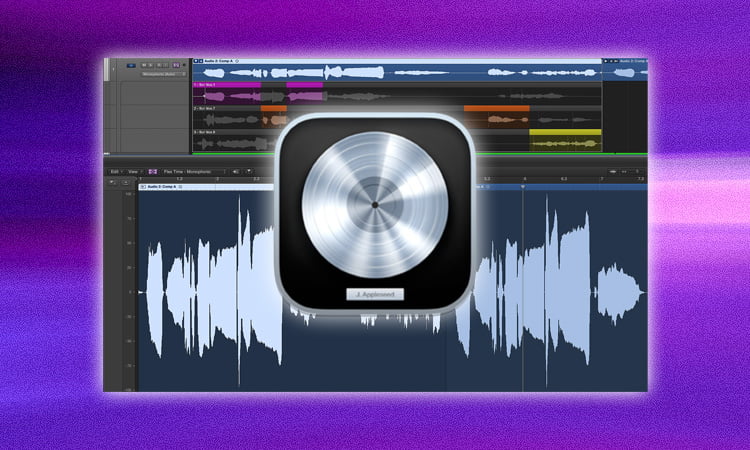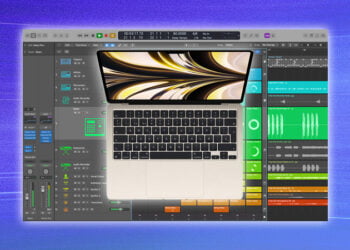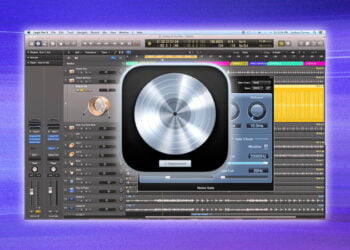Producing music using a digital audio workstation (DAW) can be a daunting task for those who are unfamiliar with the process.
Logic Pro X is an incredibly powerful and popular DAW that is used by many producers and audio engineers.
One of the key tasks in any production is sample manipulation.
Sampling in Logic Pro X can be a tricky and time consuming process, but it is an essential step in many productions.
In this blog post we will cover the basics of sampling in Logic Pro X, so you can get up and running quickly and efficiently.
We will cover topics such as how to select samples, how to control their settings, and how to create your own unique sound from them.
With the information in this blog post, you will be able to confidently start sampling in Logic Pro X to create your own professional productions.
Importing Audio Files
To begin sampling in Logic Pro X, the first step is to import your audio files.
This can be done in several ways.
You can drag your audio files directly into the Arrange window, or you can use the File menu and select “Import Audio File.” You can also right-click in the Arrange window and select “Import Audio File.” Logic Pro X supports many audio file types, such as AIFF, WAV, and MP3.
Once you have imported the audio files, you can drag them into the Sampler track.
Setting Up a Sampler Instrument
The second step in sampling in Logic Pro X is setting up a sampler instrument.
You can do this by clicking on the “+” button at the top of the window and selecting “New Sampler Instrument”.
This will open a new window where you can select which type of sample you want to use.
You can choose from a variety of instruments, including drums, strings, brass, and synths.
Once you’ve chosen your sample, you can adjust the settings, like pitch transposition, looping, and attack and decay.
With a sampler instrument, you can make your own sounds and tweak them as you see fit.
Choosing a Sample
Choosing a sample is the next step in producing a track in Logic Pro X.
This can be done in one of two ways: you can either load a sample from the Library, or you can drag and drop an audio file from your hard drive.
To load from the Library, click the Sampler button in the top toolbar and then select the Library tab.
Here you will find a variety of samples across multiple genres, from drum loops to vocal samples.
To drag and drop, simply locate the audio file you’d like to use in Finder or Windows Explorer, then drag it onto the sound wave display in Logic Pro X.
The sample will load automatically and be ready to use.
Setting Up the Sample
After you’ve chosen the sample you’d like to use, it’s time to set it up in Logic Pro X.
To do this, drag and drop the sample into the Sample Editor.
The Sample Editor has a variety of settings you can adjust to customize the sound of your sample.
You can change the tuning, start time, end time, sample rate, and gain. Once you’re satisfied with how your sample sounds, you can drag the sample back into your project.
Now you’re ready to start creating with your sample!
Adding Effects to the Sample
Once you’ve found and recorded a sample you like, you can start adding effects to it.
To do this, click the “Effects” tab on the left side of the screen.
Here you will find a variety of options for adding effects to your sample.
You can choose from reverb, delay, distortion, and more.
Each effect can be adjusted to your taste, so you can create the exact sound you’re looking for.
When you’re happy with your sound, click the “Apply” button to save your changes.
Making Edits to the Sample
After you make your selection, the Sample Editor will appear.
Here, you’ll find all the tools you need to make edits to the sample.
You can adjust the start and end points to make the sample loop at certain points, adjust its pitch, reverse it, and more.
You can also add effects like reverb or delay to the sample to give it some extra depth.
Once you’re happy with the settings, hit the ‘Done’ button to apply the changes and you’re ready to go.
It’s that easy!
Exporting the Sample
Sampling in Logic Pro X is a great way to build custom sounds for your track.
Once you’ve sampled a sound, you may want to export it for use in other projects.
To export the sample, navigate to the Audio File Editor in the upper right corner of your Logic Pro X window.
From there, select the sample you want to export and then click “Export.” You can then select the file type you want to export your sample as, such as WAV or AIFF.
Once you’ve selected a file type and clicked “Export,” you’ll be able to save the sample to your desired location.
Saving the Sample for Future Use
Once you’ve found the perfect sample for your project, you’ll want to save it for future use.
To do this, head to the Sample Editor window and select the sample you want to save.
Then, click the Save button at the bottom of the window and provide a name for the sample.
The sample will now be accessible from the Sample Browser for use in your future Logic Pro X projects.
Conclusion
In conclusion, sampling in Logic Pro X is a great way to add an extra layer of complexity to your music.
Not only does it give you access to a library of sounds and instruments, but you can also create your own samples from scratch.
Whether you’re looking to add complex rhythms, intricate melodies or something else entirely, sampling can make all the difference.
With the right knowledge, sampling can be an incredibly powerful tool in your production arsenal.






















